This post is a bit deeper when it comes to the math side, I think you better understand it if you already know what such a Cauchy integral representation for the standard complex plane is. I remember a long long time ago when I myself did see this kind of representation for the first time, I was completely baffled by this. How can you come up with a crazy looking thing like this?
But if you look into the details it all makes sense and this representation is the basis for things like residu calculus that you can sometime use to crack an integral if all more easy approaches fail.
In most texts on the standard complex numbers (with standard I mean that the imaginary unit i behaves like i^2 = -1 whereas on my elliptical version the behavior is i^2 = -1 + i) it is first shown that you can take such integrals over arbitrary closed contours going counter clockwise. If the function you integrate has no poles on the interior of that contour, the integral is always zero.
I decided to skip all that although if you want, you can do that of course for yourself. I also skipped all standard proofs out there because I wanted to craft my own proof and therefore in this post we only integrate over the ellipses and nothing else.
Another thing to remark is that this is just a sketch of a proof, a more rigor approach would make the post only longer and longer and I think that people who are interested in math like this are perfectly capable of checking any details they think that are missing or swept under the carpet. For example I show in this post the important concept of ‘radial independence’ but I show that only for a very simple function g(z) = 1. It’s just a sketch and sometimes you have to fill in what is missing yourself. Sorry for being lazy but now already this post is 5 and a half pictures long so that’s long enough.
It also contains two extra figures and may be I will write a small appendix related to figure 1. But I haven’t done that yet so below is the stuff and I hope you like it.
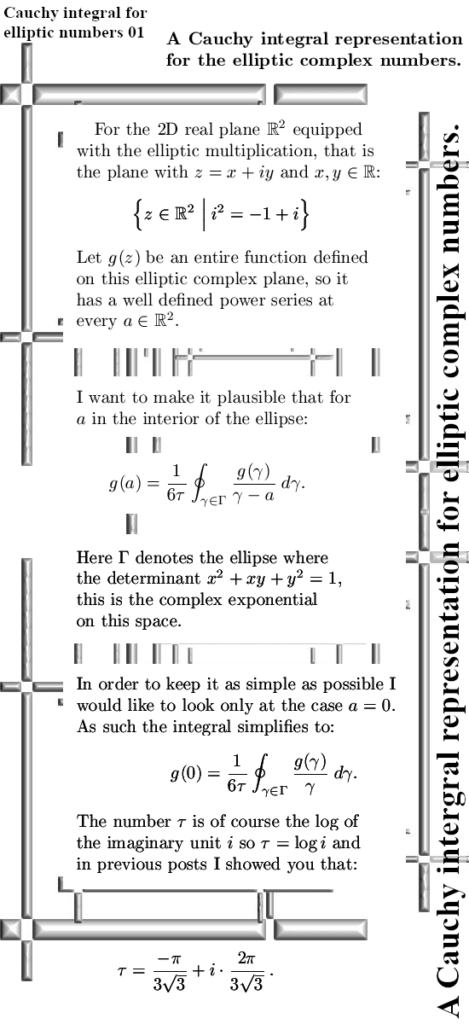

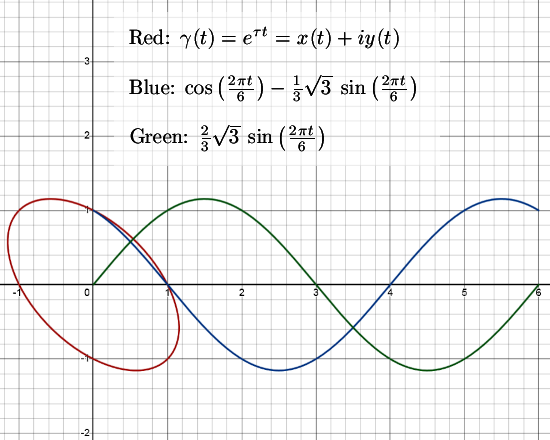

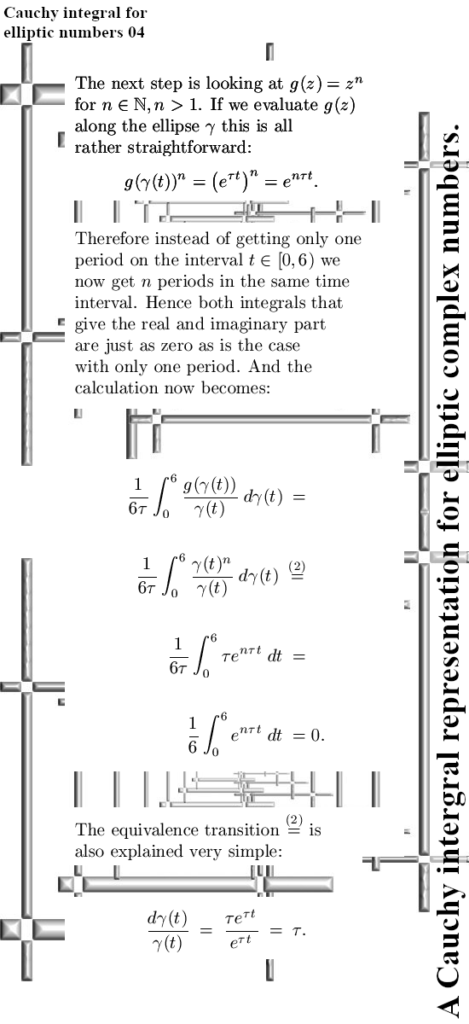
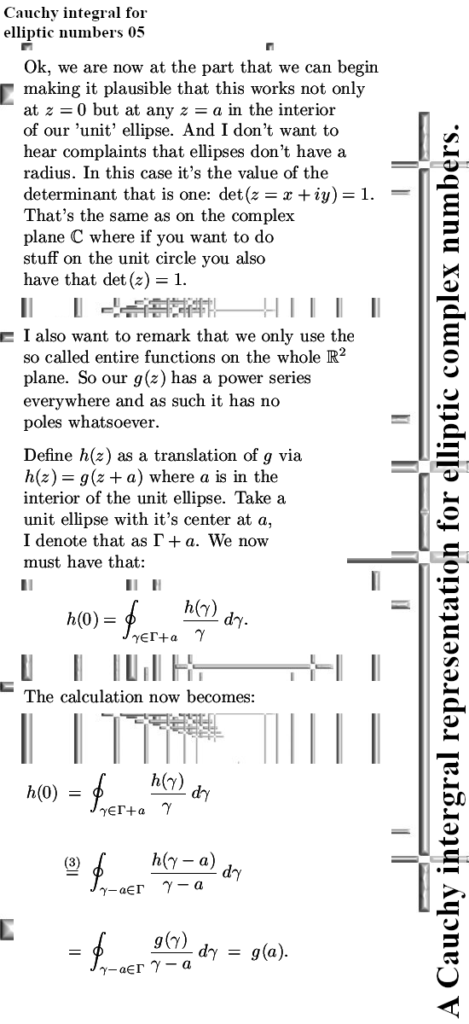
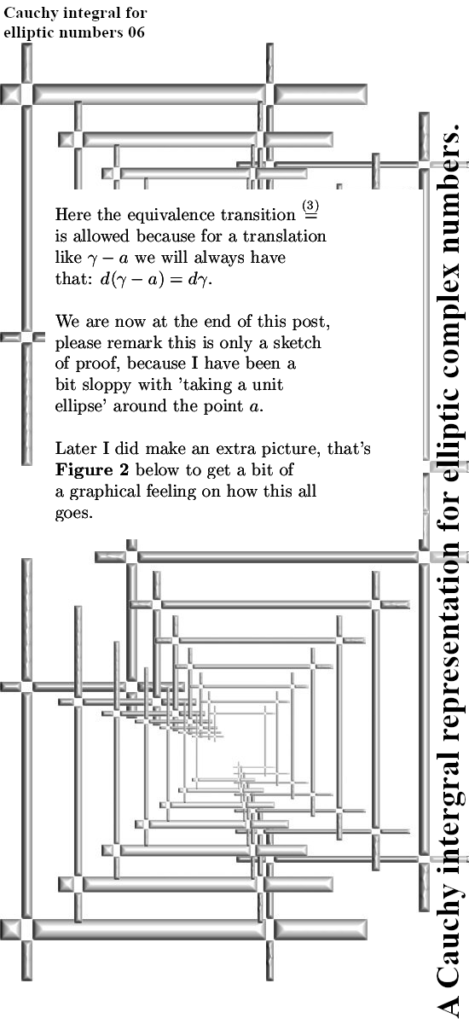

Ok, all that is left is an appendix where I give a third parametrization of the elliptic complex exponential. It is just some leftover from some time ago when I wondered if the two coordinate functions might some some time lags of each other. And yes, they are. In the case of these elliptic complex numbers the time lag is one third of the period.
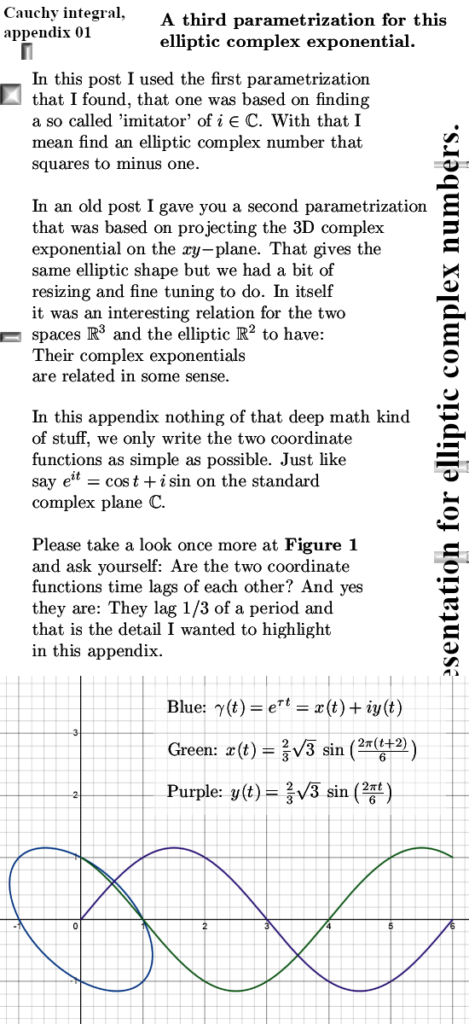
Before I end this post, why not place a link to all that official knowledge there is around the Cauchy integral representation there is. Here is a link:
https://en.wikipedia.org/wiki/Cauchy%27s_integral_formula
That was it for this post, as always thanks for your attention.